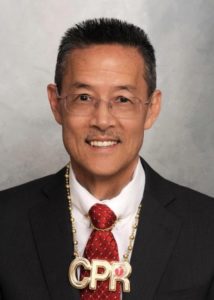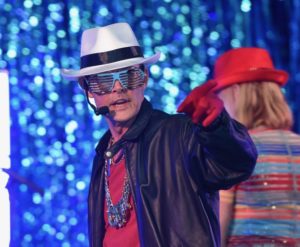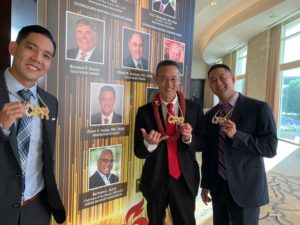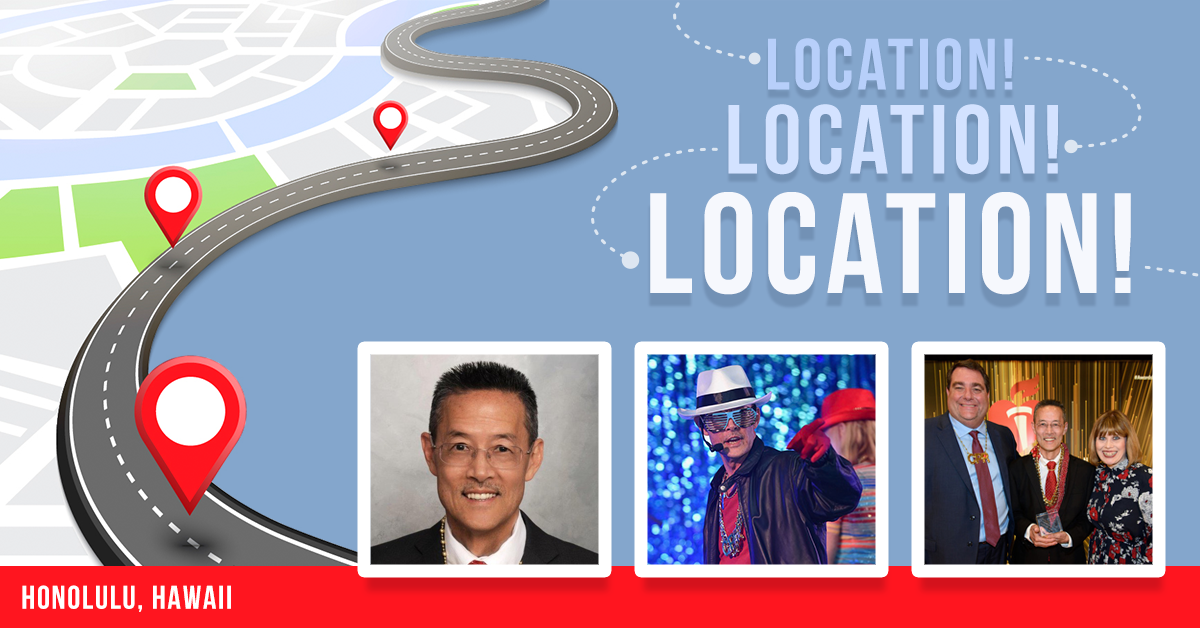Location! Location! Location! Honolulu, Hawaii – Dr. Alson Inaba
International Impact
If you’ve ever hummed “Stayin’ Alive” while learning – or performing – CPR, USACS’ Dr. Alson Inaba has touched your life. The Honolulu native was born in the hospital he has served since for more than 27 years. He enjoys coming up with innovative, fun, and memorable ways of teaching.
Most recently, Dr. Inaba was honored at the Innovation at Heart by the American Heart Association for his innovation of using the classic disco hit song by the Bee Gee’s to teach the correct rate of heart compressions. This CPR technique has saved hundreds of lives around the world. He’s also updated to a modern song – fellow Hawaiian native Bruno Mars’ Uptown Funk.
Education
Dr. Inaba earned a bachelor’s degree at Creighton University and his medical degree with Alpha Omega Alpha Society honors at Tufts University of Medicine. He completed a pediatric residency, then a pediatric emergency medicine fellowship at Oakland Children’s Hospital.
Home

After his fellowship, he returned to Hawaii and has been working in the Emergency Department since 1992.
Here’s a Q&A with the unforgettable Dr. Alson Inaba:
Q. What drew you to Hawaii?
I was born and raised in Honolulu, Hawaii so I knew that I wanted to return home to care for the children (“keiki”) of Hawaii.
Q. What’s the best advice you ever received as a physician and what’s the most important advice to give new physicians?

The best advice I received was from my pediatrician before I started college. He told
me, “First CARE for the PERSON…and then treat their disease.”
I was so impressed with this quote that I made a poster of his advice and kept it on my dorm room wall during college. And I still have that poster that I made back in 1979. When I was asked to be the keynote speaker for the John A. Burns School of Medicine White Coat Ceremony for the incoming freshman class in 2011, I incorporated this advice into my presentation. I told the incoming class that the primary goal of every physician should NOT be to CURE the patient’s pain, disease and suffering since we cannot cure all diseases. However, their main goal should be to “C-A-R-E” for the patient. And “C-A-R-E” stands for:
Compassion… treat every patient and their family with compassion
Action… let your actions and words reflect that of a compassionate physician
Respect… respect the patient’s and family’s cultural beliefs
Empathy… empathy is NOT the same as sympathy, so be empathetic for every
patient.
The pediatric ED is a very challenging environment to demonstrate “CARE,” since every family that presents to the ED is already very anxious, worried and sometimes angry that their child is not feeling well. However, by immediately connecting with the family, personalizing your approach to the child and understanding their concerns, you will be able to earn their trust and thereby provide compassionate and efficient CARE.
Q. What do you do to encourage a quality work environment?

All of our physicians and nurse provide excellent care of our patients and their families. My focus since 1992 has been on continuing that excellent care of the child even after the families are discharged from our ED. I have been doing this by calling every single one of my patient’s families over the last 27 years and I have not missed a single call. I feel that callbacks are very comforting to families and provide a venue for the families to have additional questions answered by me, their physician. Making sure that the child’s symptoms are improving with the treatment plan that I proposed and that follow up has been arranged are crucial in the child’s recovery. I also used my passion for patient callbacks in helping our organization (Hawaii Pacific Health) establish ED patient callbacks for all four of our hospitals.
Although ED nurses do the callbacks, I have continued to call back each and every one of the families to
provide that personal touch. Although callbacks do require additional work on my days off, I have found callbacks very rewarding and would encourage more physicians to do the same.

